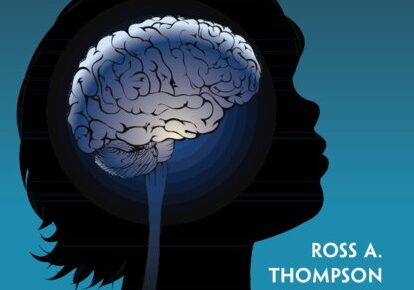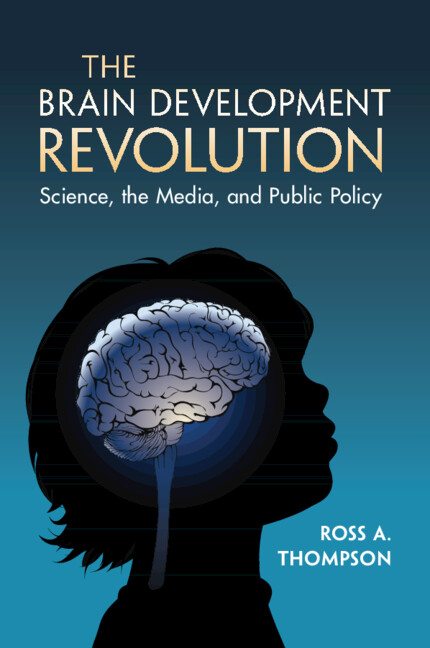
Science informs public understanding on everything from climate change to cancer treatments to child development. But how does it do so, and who determines what the public learns? Does science infiltrate public awareness from the work of science journalists reporting on new discoveries in places like the New York Times or the BBC? Or from the efforts of scientists to publicize their own work in blogposts or op-eds? Or is the public best informed by news of discoveries that happen to go viral on social media?
Each of these can be influential. But preceding them, surprisingly often, are the strategic efforts of actors and agencies with an interest in promoting a particular scientific message to the public. The reasons for their interest can involve agendas that extend well beyond the laboratory, and they affect how science is interpreted, its communication, and the implications that are drawn from it. In The Brain Development Revolution: Science, the Media, and Public Policy, I examine the strategies and goals behind a strategically designed campaign to bring developmental brain science to the public, and I consider the impact of the revolution it created in public understanding during the past 25 years. The brain development revolution resulted, simply stated, in brain development becoming the dominant lens through which people view child development, and it has had significant implications for early education, child health care, and other public policies.
The brain development revolution began with the April 1997 I Am Your Child campaign that engaged public attention through a sophisticated media communications strategy that included a White House conference, special issues of prominent newsmagazines, daily reports on morning news programs such as Good Morning America, extensive reporting in national media, and state and local outreach initiatives — all in just a couple of weeks. But like all revolutions, its foundations were established much earlier, in the science of early brain development. I summarize what the science told us then, and now, about the growing brain, and the benefits of this new way of looking at children’s development. I also examine the limitations of developmental neuroscience, why we are — but should not be — neurodeterminists, and some of the problems in how we interpret brain science that can lead to misleading conclusions.
Then I profile the I Am Your Child campaign, describing how child advocates, media celebrities, public officials, advertising professionals, researchers and others contributed to planning and shaping the brain development message. The campaign emphasized the early years as the central period of brain growth and the long-term benefits of investing in young children’s development. In the context of parents’ worries about the effects of day care on babies, whether nurture or genes is more important to children’s development, and whether their offspring would be ready for kindergarten, the campaign naturally captured broad attention. But it also caused parents and policymakers to worry about whether they were doing the right things, early enough. to stimulate the developing brain. Meanwhile, scientists were also responding, sometimes critically, to the campaign’s narrow focus on the first three years and the view that early experiences determine a child’s future.
But the brain development agenda moved forward, and I examine some of the public policies emerging from its messaging. In California, voters approved a referendum for a tobacco tax to provide millions for early childhood programs, an initiative imitated in other states. The Pew Charitable Trusts initiated a national campaign for prekindergarten education, arguing for the importance of stimulating early brain development for school readiness, that resulted in pre K programs for 5-year-olds throughout the country. In many states, new child care programs were created to strengthen the “human capital” deriving from the developing brain. The brain development revolution also contributed to the expansion of child health care coverage and new awareness of the effects of stress on children’s developing brains.
But there were also missed opportunities. Despite longstanding knowledge of how poverty impairs the developing brain, there was no extension of the campaign to promote support for impoverished children (maybe because “I am your child” does not extend to the children of other families in poverty). Despite extensive research showing that the prenatal months witness the most profound growth in the brain, the brain development revolution never extended to the prenatal period (perhaps to avoid becoming enmeshed in the politics of abortion). And with its focus on the early years, the brain development revolution completely overlooked how significantly the developing brain rewires itself in adolescence to prepare youth for adulthood.
With new advocates joining the revolution, the messaging expanded. Economists argued that investing in early brain development promotes a child’s cognitive growth and also supports economic development as children grow into productive workers and consumers. In other words, brain development is an investment in economic development. The brain development message was mobilized by other advocates to promote paid parental leave, home visitation programs, expanded child care subsidies, K-12 educational reform, and even expectations for reductions in teen pregnancy, criminality, and drug abuse. With expansive regard for the importance of the early years, it was easy for advocates to overpromise the benefits of efforts to support the developing brain.
The brain development revolution is important because it transformed public understanding of early childhood, even though the messaging was selective and its implications often overpromised. It is also important because it foreshadowed our current diverse, decentralized environment of science communication. With the breakdown of the business model of traditional journalism, people no longer learn about scientific discoveries primarily through the curated reporting of science journalists. They instead hear multiple messengers with diverse agendas using nontraditional media to convey scientific messages that may stretch far beyond the science. Scientific messages are “framed” to orient audiences toward intended policy implications and not others. The brain development revolution was a forerunner of this media environment of today and thus causes us to ask: who is responsible for ensuring the accurate communication of science for the public good? The final chapter closes with some recommendations.

Title: The Brain Development Revolution
Author: Ross A. Thompson
Latest Comments
Have your say!